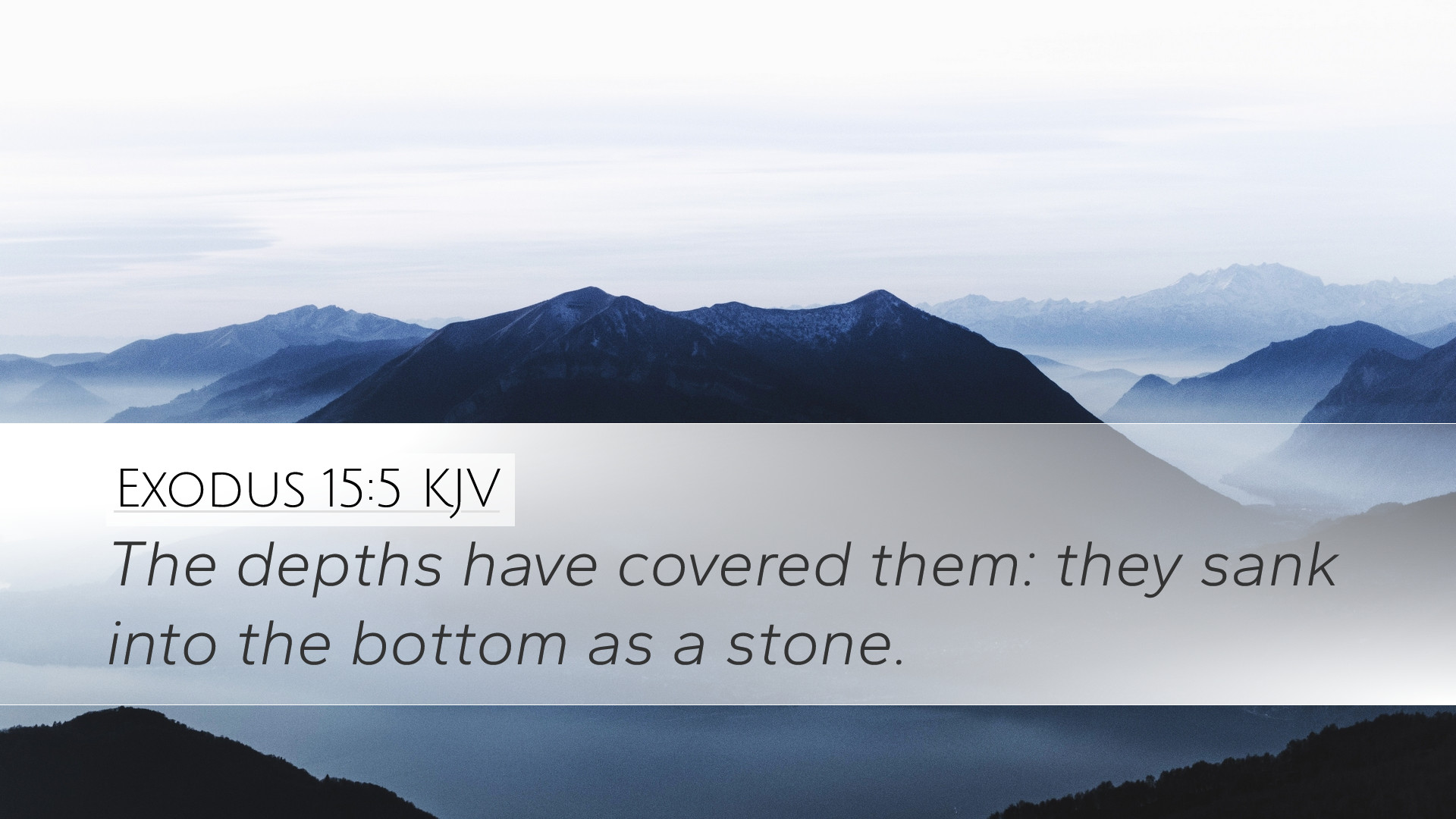Exodus 15:5 - Commentary
Verse Context: Exodus 15:5 reads, "The depths have covered them: they sank into the bottom as a stone." This verse is found in the Song of Moses, a poetic reflection on the deliverance of Israel from Egypt and their subsequent triumph over Pharaoh’s army at the Red Sea. It captures both the peril of Israel’s adversaries and the glory of God’s saving power.
Historical Background
The passage takes place immediately following the Israelites' miraculous crossing of the Red Sea. After generations of slavery in Egypt, the deliverance marks a significant turning point for God's chosen people. In this context, Moses leads a song of praise not only to recount the events but to celebrate God's sovereignty and power over their enemies.
Verse Analysis
Different commentaries provide unique insights into the implications and meanings behind the imagery employed in this verse.
Matthew Henry's Commentary
Henry emphasizes the metaphorical representation of the depths covering Pharaoh's chariots and horsemen. He notes, "They sank into the bottom as a stone" illustrates the totality of their defeat; it is a stark reminder of the God who fights for His people. Henry reflects on the nature of God's deliverance, describing it as complete and beyond human understanding. This verse symbolizes not only physical drowning but spiritual disavowal of those who opposed God’s chosen ones.
Albert Barnes' Commentary
Barnes highlights the scene's vividness, pointing out that "the depths" can be interpreted both as the literal waters of the Red Sea and the spiritual assertion that God will protect His people from their enemies. He sees this verse as an encouragement for believers that God’s justice prevails and evil does not triumph over those who are faithful to Him. Barnes further elaborates on the poetic nature of the song, acknowledging that it serves as a powerful reminder of divine retribution and moral order.
Adam Clarke's Commentary
Clarke provides a detailed examination of the original language used in this verse, translating the concepts of "depths" and "sank" to capture the fulcrum of despair that overtakes the enemies of Israel. He points out how "sank into the bottom as a stone" could reflect their hardened hearts against God—their resistance leading to their downfall. This commentary resonates with the broader theme of the humbling of the proud and the exalting of the lowly, a theme prevalent throughout Scripture.
Theological Insights
This verse not only recounts a historical event but also has significant theological underpinnings that resonate with the entire biblical narrative. Here, we observe profound truths regarding God's nature:
- God as Deliverer: The imagery of drowning emphasizes God’s role as the sovereign protector, delivering His people from bondage and oppression.
- Justice of God: The fate of Pharaoh’s army serves as a stark warning against rebellion against God and highlights His justice against those who oppose His will.
- Hope for the Faithful: For believers, this verse resonates with the confidence that God will ultimately intervene in their struggles, providing assurance amid adversity.
Practical Applications
Understanding Exodus 15:5 in light of these commentaries invites practical reflection for pastors, theologians, and students:
- Encouragement in Trials: This verse is a reminder that God sees our struggles and is actively fighting for us against our spiritual adversaries.
- Promoting Justice: It challenges believers to align their lives with God's justice, reflecting on how they live toward others.
- Celebration of God’s Grace: As believers, acknowledging God’s past deliverance helps cultivate a heart of gratitude and worship, aligning with the call to sing praises to the Lord.
Conclusion
Exodus 15:5 serves as a poignant reminder of God's sovereignty and his commitment to deliver His people. Through the insights of Matthew Henry, Albert Barnes, and Adam Clarke, a rich tapestry of theological reflection and practical application emerges. As pastors and scholars meditate on this verse, they are encouraged to see both the deep historical significance and its ongoing relevance in Christian faith and practice today.


